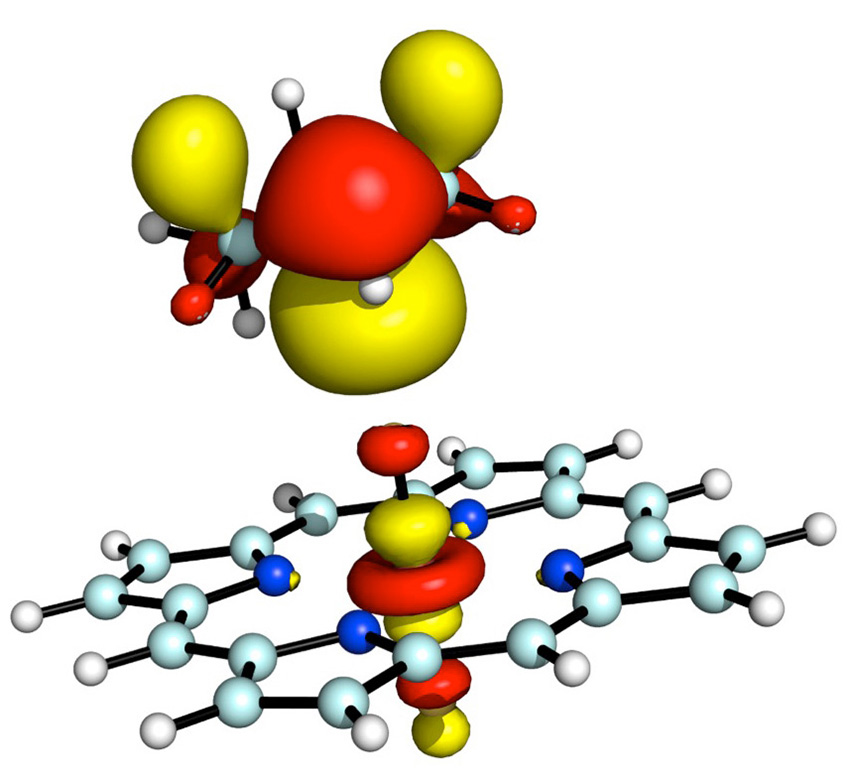New Catalytic Approach Builds Molecules with Specific Functionality More Safely and Efficiently
Rapid creation of carbon-fluorine bonds may lead to improved production of drugs, agrochemicals and positron emission tomography (PET) tracers.

The Science
A novel manganese porphyrin complex was discovered that catalyzes the conversion of carbon-hydrogen (C–H) bonds to carbon-fluorine (C–F) bonds in a broad range of chemicals. The process uses readily available starting materials including fluorine sources.
The Impact
Carbon-fluorine (C–F) bonds are increasingly important constituents of drugs, agrochemicals and PET tracers. However, the conversion of C–H bonds of readily available starting materials, including those derived from fossil resources, to C–F bonds is difficult to achieve. The manganese porphyrin catalyst discovered in this research enables direct formation of carbon-fluorine bonds from strong carbon-hydrogen bonds using conveniently handled fluoride salts under mild conditions, and provides a substantial enhancement in the ability to prepare fluorinated compounds.
Summary
Catalysts for low-temperature and selective substitution of bonds in hydrocarbons to produce specific functionality are central to the development of advanced technologies that can provide dramatic improvements in the utilization of energy. The Center for Catalytic Hydrocarbon Functionalization (CCHF), a DOE funded Energy Frontier Research Center, is developing efficient catalysts for conversion of hydrocarbons into higher value materials. CCHF researchers at Princeton University and the California Institute of Technology discovered a manganese porphyrin catalyst (lower left molecule in figure) that selectively fluorinates carbon-hydrogen bonds under mild conditions using simple fluorides. The new fluorination system can be applied to a variety of alkanes, terpenoids and steroids—industrial molecules that are used in agriculture, pharmaceutical production, and medical positron emission tomography (PET) scan tracers. The yields of the reaction are sufficiently high and the techniques are sufficiently simple that the reaction can be performed without specialized apparatus. Given that the source of F in this one-step, one-pot protocol is fluoride ion, applications to incorporate isotopically-labeled F into a wide variety of biomolecules and synthetic building blocks can be expected.
A patent application has been filed on the methodologies and resulting catalysts.
Contact
John T. Groves
Princeton University
jtgroves@princeton.edu
William A. Goddard, III
California Institute of Technology
wag@wag.caltech.edu
T. Brent Gunnoe
Director of the CCHF
tbg7h@virginia.edu
Funding
DOE Office of Science, Basic Energy Sciences, Energy Frontier Research Centers (EFRC) Program (DFT calculations, hydrocarbon C-H activation); National Science Foundation (fluorination of complex natural products and isolation of the high-valent manganese fluoride).
Publications
W. Liu, X, Huang, M. Cheng, R. J. Nielsen, W. A. Goddard III, J. T. Groves, Science 337, 1322 -1325 (2012), [DOI: 10.1126/science. 1222327]
Related Links
Center for Catalytic Hydrocarbon Functionalization (CCHF) EFRC
Highlight Categories
Performer: University
Additional: Technology Impact



